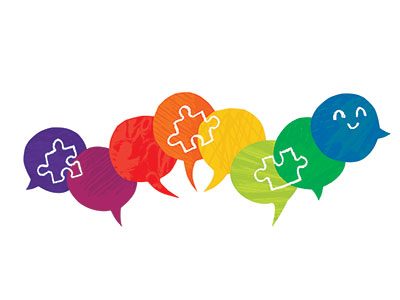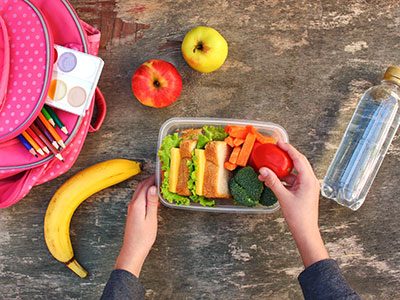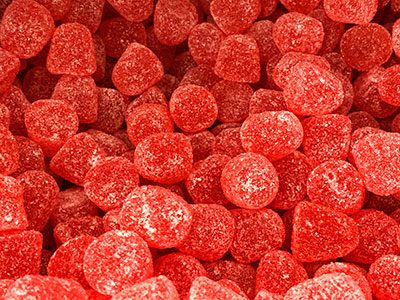According to Hemant Prashad Sharma, MD, Chief of Allergy and Immunology at Children’s National Hospital, about 8% of children have a food allergy. A food allergy is an adverse reaction to a specific food that the body thinks is harmful. When someone has a food allergy, their body makes antibodies called Immunoglobulin E (IgE) directed against the food allergen. If they get exposed to the food allergen, the IgE binds it and activates allergy cells to release chemicals like histamine which cause the symptoms of the allergic reaction.
Some common food allergens include:
- Cow’s milk
- Eggs
- Peanuts
- Tree nuts (walnuts, pecans, hazelnuts, almonds, cashews, pistachios, and macadamia nuts)
- Fish
- Shellfish
- Soybeans
- Wheat
Common food allergy symptoms include:
- Skin and mucous membranes:
- Hives, redness, and swelling of the face or extremities
- Itching and swelling of the tongue, lips, mouth and throat
- Gastrointestinal tract:
- Nausea, abdominal pain, vomiting and diarrhea
- Respiratory system:
- Runny nose, sneezing, coughing, wheezing and shortness of breath
- Cardiovascular system:
- Hypotension (low blood pressure), dizziness and syncope (fainting)
Any of these food allergies can lead to a severe, life-threatening reaction called anaphylaxis. It is estimated that food-induced anaphylaxis is the reason for about 200,000 emergency department visits each year.
Why do some people have food allergies and other people don’t?
Both genetic and environmental factors may contribute to the development of food allergies. The tendency to develop allergic conditions, such as asthma, hay fever, eczema and food allergy, are increased if a parent has any one of those conditions. There is also evidence that environmental factors, like the timing of food introduction, the gut microbiome and diet, may influence risk of food allergies.
Testing for food allergies
Food allergies, however, are a manageable conditions and can be diagnosed even in infancy. Some tests for food allergies include:
- Skin tests: A skin prick test is usually done on the back or forearm. A small amount of the allergen is introduced on the skin surface, and the skin is pricked. After 15 minutes, it is noted whether or not a wheal, which is a small reddish bump, is formed. If no wheal appears, it is usually considered a negative skin test. If a wheal appears, it is considered a positive skin test.
- Blood tests: Another test that may be performed is a blood test known as a radioallergosorbent test (RAST). RASTs check the IgE antibody levels in the blood for certain food allergens. While both of these tests are very good diagnostic tools, neither is 100 percent accurate and false positives and negatives are possible. The only definitive test for a food allergy involves seeing what happens after the suspect food is eaten.
- Food challenge: If the other tests are not conclusive, a food challenge may be recommended by your allergist. This involves eating gradually increasing amounts of the suspect food in a medical setting, and observing for any signs of an allergic reaction.
- Elimination diet: During an elimination diet, suspect foods are removed from the diet for a few weeks. If the symptoms cease during this time, it is likely that this food is causing the symptoms. The food is then gradually reintroduced to the diet. If the symptoms return, it can be concluded that the child is allergic to that food.
Dr. Sharma suggests that for the most accurate results, parents must be aware of their child’s history or the suspected food allergy to help guide the testing.
How to treat food allergies
The best treatment of food allergies is to stay away from foods and drinks that contain the allergen. It is important to read all of the labels on food packages and be wary of cross-contact of foods. Your child’s doctor will prescribe epinephrine autoinjectors for treatment of severe anaphylactic reactions.
According to Dr. Sharma, about 80-90 percent of kids allergic to milk, wheat, eggs and soy may grow out of their allergy, but the likelihood of outgrowing a peanut, tree nut or seafood allergy is only 10 percent.
Test your food allergy knowledge and learn strategies to help tamp down your child’s anxieties in our food allergy quiz!
 https://riseandshine.childrensnational.org/wp-content/uploads/2025/12/Mom-nursing-feature.jpg
300
400
Rise and Shine
https://riseandshine.childrensnational.org/wp-content/uploads/2017/11/childrens_riseandshine_logo.jpg
Rise and Shine2025-12-04 11:29:032025-12-04 11:29:03Tips for surviving your first month of breastfeeding
https://riseandshine.childrensnational.org/wp-content/uploads/2025/12/Mom-nursing-feature.jpg
300
400
Rise and Shine
https://riseandshine.childrensnational.org/wp-content/uploads/2017/11/childrens_riseandshine_logo.jpg
Rise and Shine2025-12-04 11:29:032025-12-04 11:29:03Tips for surviving your first month of breastfeeding





















Leave a Comment
Want to join the discussion?Feel free to contribute!